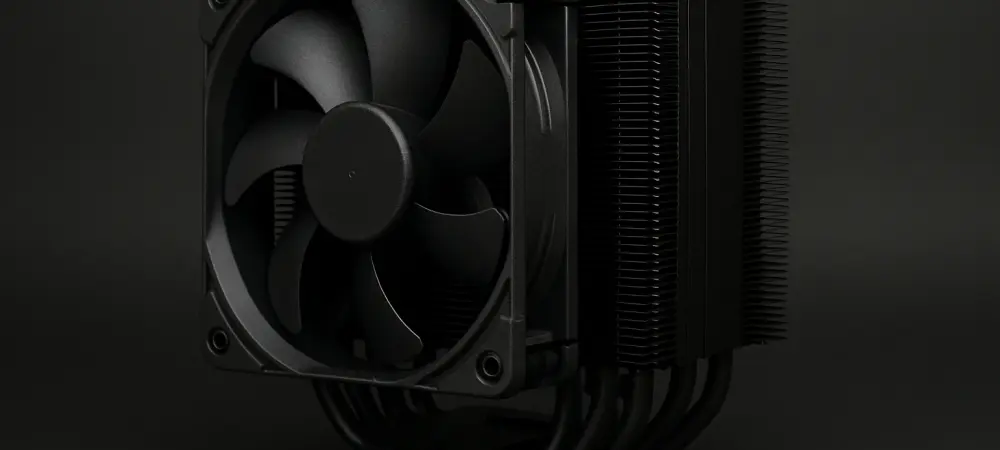Diving into the world of high-performance PC cooling, we’re thrilled to sit down with Dominic Jainy, an IT professional whose deep knowledge of cutting-edge hardware and innovative technologies makes him the perfect guide to unpack Noctua’s latest release. With a career spanning artificial intelligence, machine learning, and blockchain, Dominic brings a unique perspective to how hardware like CPU coolers impacts system performance and user experience. Today, we’re focusing on the newly launched NH-D15 G2 chromax.black CPU cooler, exploring its bold design shift, top-tier performance, pricing strategy, and forward-thinking compatibility. Let’s get started.
Can you walk us through what sets the NH-D15 G2 chromax.black apart from other coolers in Noctua’s lineup?
Absolutely. The NH-D15 G2 chromax.black is a flagship air cooler that builds on Noctua’s reputation for excellence, but with a twist. It retains the core strengths of the standard NH-D15 G2—like the massive eight-heatpipe heatsink and twin 140mm fans—but introduces a sleek all-black aesthetic. This is a big departure from Noctua’s signature beige and brown color scheme, which has been a hallmark of their brand for years. It’s not just about looks, though; the cooler also boasts enhanced socket compatibility, making it future-proof for upcoming CPU designs. It’s a premium package for enthusiasts who want both performance and style.
What prompted Noctua to switch to a black design for this model, breaking away from their traditional look?
I think it’s a response to market demand. For years, Noctua fans have loved the performance but often critiqued the earthy tones that didn’t always match modern, sleek PC builds. Black is a universal, stealthy look that blends seamlessly into most setups, especially for gamers and builders prioritizing aesthetics. It’s a way for Noctua to appeal to a broader audience without compromising their engineering ethos. They’ve finally embraced the idea that looks matter just as much as cooling power in today’s PC-building culture.
At $189, the NH-D15 G2 chromax.black carries a hefty price tag. Can you explain what drives this cost?
Sure, the price is steep, but it reflects the quality and engineering behind it. You’re paying for a meticulously designed heatsink with eight heatpipes for maximum heat dissipation, paired with high-end 140mm fans that are built for both performance and silence. The materials and build quality are top-notch, ensuring durability and reliability. Plus, the R&D that went into making it compatible with next-gen sockets adds value for future-proofing. It’s not just a cooler; it’s an investment in a premium cooling solution that’s built to last.
How does its performance stack up, especially with those standout features like the heatpipes and fans?
The performance is where this cooler really shines. The eight heatpipes are arranged to efficiently pull heat away from the CPU, spreading it across a large surface area for dissipation. The twin 140mm fans then push a ton of air through the heatsink, keeping temperatures low even under heavy loads like gaming or overclocking. What’s impressive is how Noctua balances this with noise levels. Their PWM control and fan design keep things ultra-quiet, so you’re not dealing with a jet engine in your case. It’s ideal for users who demand both cooling power and a peaceful environment.
With cheaper coolers offering near-similar performance, how does Noctua justify the price-to-performance ratio for this model?
That’s a fair concern, as there are budget coolers out there that come close in raw cooling numbers. But Noctua’s argument is about the total package. You’re not just buying cooling performance; you’re getting unparalleled build quality, near-silent operation, and compatibility with future hardware. For someone building a high-end rig or a workstation where reliability and quietness are non-negotiable, the NH-D15 G2 chromax.black is worth the premium. It’s for users who want the best, not just ‘good enough.’ I’d tell anyone on the fence to weigh their priorities—if noise and longevity matter, this is a solid choice.
Let’s talk about the improved socket compatibility. Why is support for the next-gen Intel LGA-1954 socket such a big deal?
Compatibility with the LGA-1954 socket is a forward-thinking move. It means this cooler is ready for Intel’s upcoming Nova Lake architecture, so users won’t need to buy additional mounting kits or replace their cooler when upgrading to those CPUs. That’s a huge plus for anyone planning a future build or upgrade, as it saves both money and hassle down the line. It shows Noctua is thinking ahead, ensuring their product remains relevant even as hardware evolves, which adds a lot of value to that $189 price point.
Noctua also launched black versions of the NF-A14x25 G2 fans. Can you tell us more about their design and options?
Yeah, these fans are a great complement to the NH-D15 G2 chromax.black. The NF-A14x25 G2 fans come in black to match the cooler’s aesthetic, and they’re available in both square and round frame designs. The round frame is typically what you see on the cooler itself, offering a clean look and optimized airflow for heatsinks. The square frame option is more versatile for case mounting, giving builders flexibility to use them as intake or exhaust fans while maintaining a uniform black theme across their system. They’re pricey at $45 each, but the performance and design consistency are spot on for enthusiasts.
Looking ahead, what’s your forecast for the future of high-end air cooling solutions like this one?
I think high-end air cooling is going to continue carving out a strong niche, even with all-in-one water coolers becoming more affordable. Air coolers like the NH-D15 G2 chromax.black offer simplicity and reliability—no risk of leaks, no pump failures, just plug-and-play performance. I expect we’ll see even more focus on aesthetics and compatibility as manufacturers cater to custom PC builders. Innovations in fan design and heatpipe tech will likely push performance further while keeping noise down. Noctua’s already leading the charge, and I suspect they’ll keep setting the bar for what premium air cooling can achieve.

